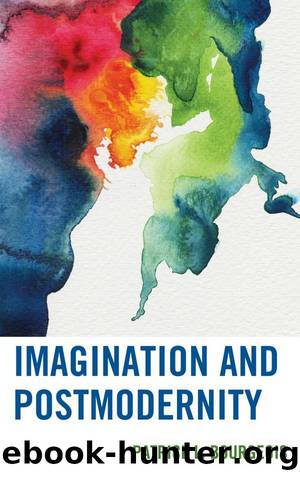Imagination and Postmodernity by Bourgeois Patrick L.;

Author:Bourgeois, Patrick L.;
Language: eng
Format: epub
Tags: undefined
Publisher: Lexington Books
Published: 2012-08-15T00:00:00+00:00
We can see Sartre introducing the later central notion of nothing in this character of the image. It is intuitively present-absent, and as such, is not Being. This point marks the difference between perception and imagination, one intending the present, the other, in a sense, the absent as not real. It is in this sense that Sartre considers the imagination to be free, thus introducing a point that becomes pivotal for his existential philosophy.
Sartre gives a final characterization of the imaginative consciousness as spontaneous. He contrasts this spontaneity of imaginative consciousness that âproduces and holds on to the object as an imageâ with the passivity of perception (Sartre, PI, 18). Its object occurs as a ânothingness.â While the perceptual consciousness is passive to the real object before it, imaginative consciousness is spontaneous as creative of an object that, as unreal, is nothingness. To further describe the relation of the image as characterized above to its object, Sartre considers it necessary to describe the image âas a functional attitudeâ (Sartre, PI, 21).
In the process of investigating various forms of images, such as paintings, photographs and impersonations, Sartre develops the central function of creative projecting of the original creator of the image as well as of the beholder. The beholder engages more in a re-creative imagination required for the image to become intentionally imagined. These creative and re-creative projections remind us of Ricoeurâs mimesis 2 and mimesis 3, which are configuration and refiguration by the creative imagination, for instance in the configuring of a story and in its being reconfigured in the readers life.[24]
We see clearly in the conclusion (Sartre, PI, pp 265 & ff) of this work a clear precursor of the later Being and Nothingness germinating in these pages. He describes the essential intentional character of consciousness and then turns to the essentially negative dimension of its other side. Consciousness is essentially a consciousness of something real, something which he will later call a thing in-itself, while it is also a non-thetic consciousness of itself as not in that mode of in-itself. He simply asserts that this consciousness of something in the situation does not cease or there would not be consciousness at all (Sartre, PI, 265). But consciousness can posit objects possessing a trait of nothingness, and here he returns to the four theses that include the âentire category of negationâ of the first investigations at the beginning of this book mentioned above: âas non-existent or as absent or as existing elsewhere or not posited as existing. â¦Thus the negative act is constitutive of the imageâ (Sartre, PI, 265). Sartre goes on to clarify this more fully in relation to his understanding of âsituations.â
Understanding situations to mean âthe different immediate ways of apprehending the real as a world,â Sartre contends that it is consciousnessâ situatedness in a world or its being-in-the-world that enables it to imagine (Sartre, PI, 268). This situatedness in the real reveals the relation to the unreal. Such apprehension of the real can lead to the
Download
This site does not store any files on its server. We only index and link to content provided by other sites. Please contact the content providers to delete copyright contents if any and email us, we'll remove relevant links or contents immediately.
| Deconstruction | Existentialism |
| Humanism | Phenomenology |
| Pragmatism | Rationalism |
| Structuralism | Transcendentalism |
| Utilitarianism |
The remains of the day by Kazuo Ishiguro(8347)
Tools of Titans by Timothy Ferriss(7748)
Giovanni's Room by James Baldwin(6760)
The Black Swan by Nassim Nicholas Taleb(6730)
Inner Engineering: A Yogi's Guide to Joy by Sadhguru(6413)
The Way of Zen by Alan W. Watts(6263)
Asking the Right Questions: A Guide to Critical Thinking by M. Neil Browne & Stuart M. Keeley(5326)
The Power of Now: A Guide to Spiritual Enlightenment by Eckhart Tolle(5299)
The Six Wives Of Henry VIII (WOMEN IN HISTORY) by Fraser Antonia(5202)
Astrophysics for People in a Hurry by Neil DeGrasse Tyson(4980)
12 Rules for Life by Jordan B. Peterson(4146)
Housekeeping by Marilynne Robinson(4025)
The Ethical Slut by Janet W. Hardy(4016)
Skin in the Game by Nassim Nicholas Taleb(3948)
Double Down (Diary of a Wimpy Kid Book 11) by Jeff Kinney(3884)
Ikigai by Héctor García & Francesc Miralles(3838)
The Art of Happiness by The Dalai Lama(3825)
Skin in the Game: Hidden Asymmetries in Daily Life by Nassim Nicholas Taleb(3704)
Walking by Henry David Thoreau(3663)
